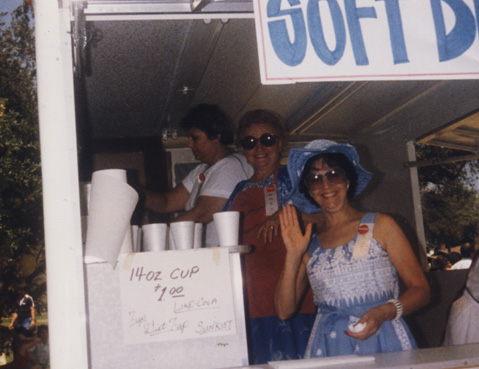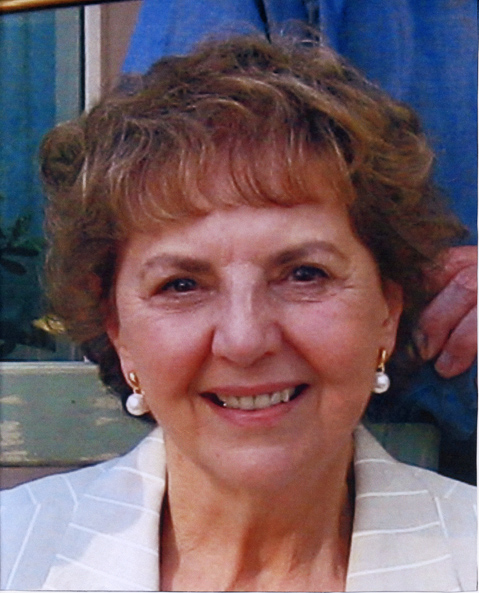
If you’ve ever attended one of the many ethnic festivals at Oak Park, give thanks to Helen Stathis. She gave this diverse community a great gift by having the vision to realize the benefit of celebrating unique cultural experiences and providing the leadership to make it happen.
Four decades ago, when Helen was the president of the St. Barbara Greek Orthodox Ladies’ Guild, members of the philanthropic group brainstormed ways to raise the significant amount of money needed to fund its charities and the construction of a new church building. She recalled for them the nostalgic days of the 1950s and 1960s when Greek families and church members gathered almost every Sunday afternoon for picnics and barbecues in local parks, including Tucker’s Grove, Nojoqui Falls, Leadbetter Beach, and Oak Park. She pointed out that whole families enjoyed sharing food, fellowship, culture, dance, and song — children, parents, and grandparents all together.

Why not plan a big fat Greek picnic for the entire community? And, she reasoned, why not schedule it for the weekend before the annual Old Spanish Days Fiesta, when there were plenty of visitors in town with not much to do and nowhere to go? Because of Oak Park’s unique dance floor, barbecue pits, tables, and beautiful tree-lined setting, she declared it was the best place to hold the celebration.
The congregation was inspired to turn that great idea into reality — and set to work cooking, baking, and inviting the community to join in the fun. The first annual Greek Festival was held at Oak Park on Sunday, August 5, 1973. Billed as the “Greek Fiesta BBQ” in the flyers posted around town, it was an immediate success.
Many who attended that day had never before seen Greek dancing, heard Greek music, or tasted homemade Greek food and pastries — and they quickly learned they loved it! The Santa Barbara Greek Festival has grown and become enormously popular as one of the best-known festivals on the West Coast, garnering many “Best Festival” honors from the local press and coverage in publications including Sunset magazine and the Los Angeles Times.
According to longtime parishioner and retired County Parks director Mike Pahos, the Santa Barbara Greek Festival eventually inspired the creation of nearly a dozen more ethnic and cultural festivals and even a city committee to help them with their increasingly complicated logistics. Today, the French Festival and the Greek Festival continue in Oak Park from their starts decades ago.
Helen was characteristically modest about her lasting contribution to her adopted hometown. Also second nature to her was the feeling of warmth and hospitality that permeates the Greek Festival, something Helen learned at an early age.
Like so many Santa Barbarans, Helen was the daughter of an immigrant family that remained close to its roots while embracing a new life in a new land. Her father and his two brothers owned a shoe-shine and hat-cleaning store in Winnipeg, Canada. Her parents’ home was a big stopover for many heading to western Canada, and they often worked at the shop. The family regularly took new Greek immigrants into their homes until the newly arrived were able to move on into their own homes.
Over the years, Helen and her husband continued the welcoming tradition, known as “parea” (a gathering of friends), by assisting many Greek families who settled in Santa Barbara, cheerfully rearranging bedrooms and sofas to accommodate members of the Bekakos, Goumas, and Stathopoulos families, among others, and forging warm and long-lasting relationships in the process. [“Stathis” is a shortening of Stathopoulos.]
Helen’s life as a good Greek daughter changed in September 1951 when she began a month-long visit to Chicago with a party at her aunt’s house. As the story goes, she walked into the room where Cy Stathis and his buddies were playing poker; he saw her, lost track of the game, and lost two bucks. The attraction was mutual, and Helen and Cy were engaged just three weeks later; they married in Winnipeg and moved to Chicago, where they raised their children Patti, Karen, and James.
But Cy and Helen disliked the weather in Chicago and decided to migrate to California with three criteria in mind: (1) a Greek Orthodox Church; (2) a city on the coast; (3) and good job prospects. After they rejected San Francisco and San Diego as respectively too cold and too big, they headed to Santa Barbara, where they were warmly welcomed by the congregation at the tiny, old Saint Barbara Greek Orthodox Church, then located on Castillo Street.
Eventually, that congregation was able to raise enough funds — in part through the proceeds of the annual Greek Festival — to build its magnificent Mediterranean, blue-and-white, village-style church in the Santa Barbara foothills.
Helen’s head for business was by no means confined to fundraising for the church. Before her children were born, she worked at Monark Silver King Bicycles and at Motorola. In 1976, she and daughter Karen signed up to study electrology, and a year later they launched the Electrolysis Clinic, a business Karen still operates today.
She loved to host barbecues and pool parties for family and friends, who especially appreciated her Greek paximadia cookies and her very American banana cream pie. Helen adored her husband, Cy, daughters Patti Stathis Langel and Karen Carlton, and son, James Stathis, as well as her grandchildren Adam, AJ, and Kristin Carralejo, and her great-grandchildren. Her last days were spent as she lived, surrounded by those she loved.
It was Helen’s understanding of how to share the simple ties that bind us together — the joyful expressions of culture through unique food and drink, musical and religious traditions, song and dance — that has added an everlasting dimension to celebrating the multicultural community that is Santa Barbara.
Efharisto, Helen Stathis, thank you.
